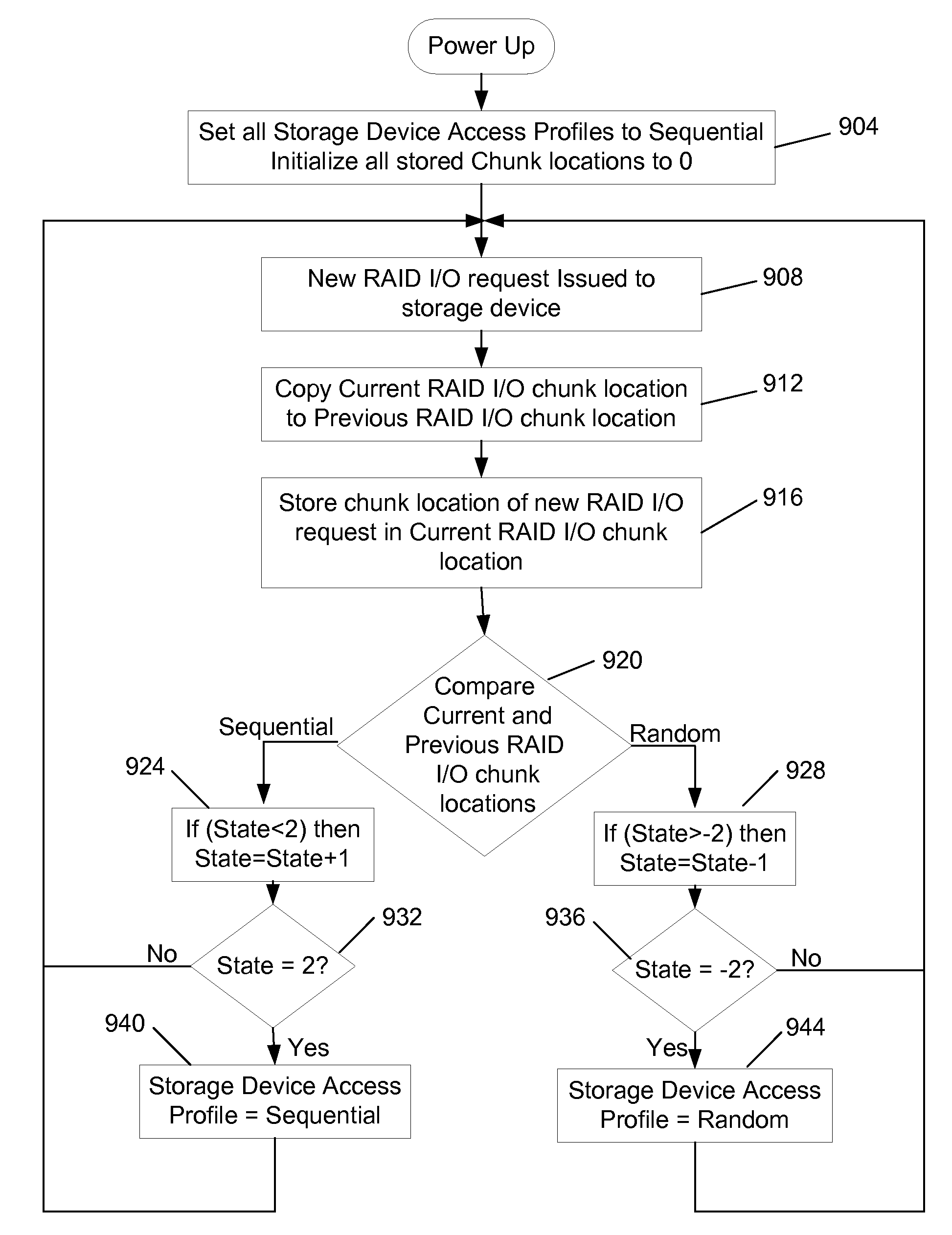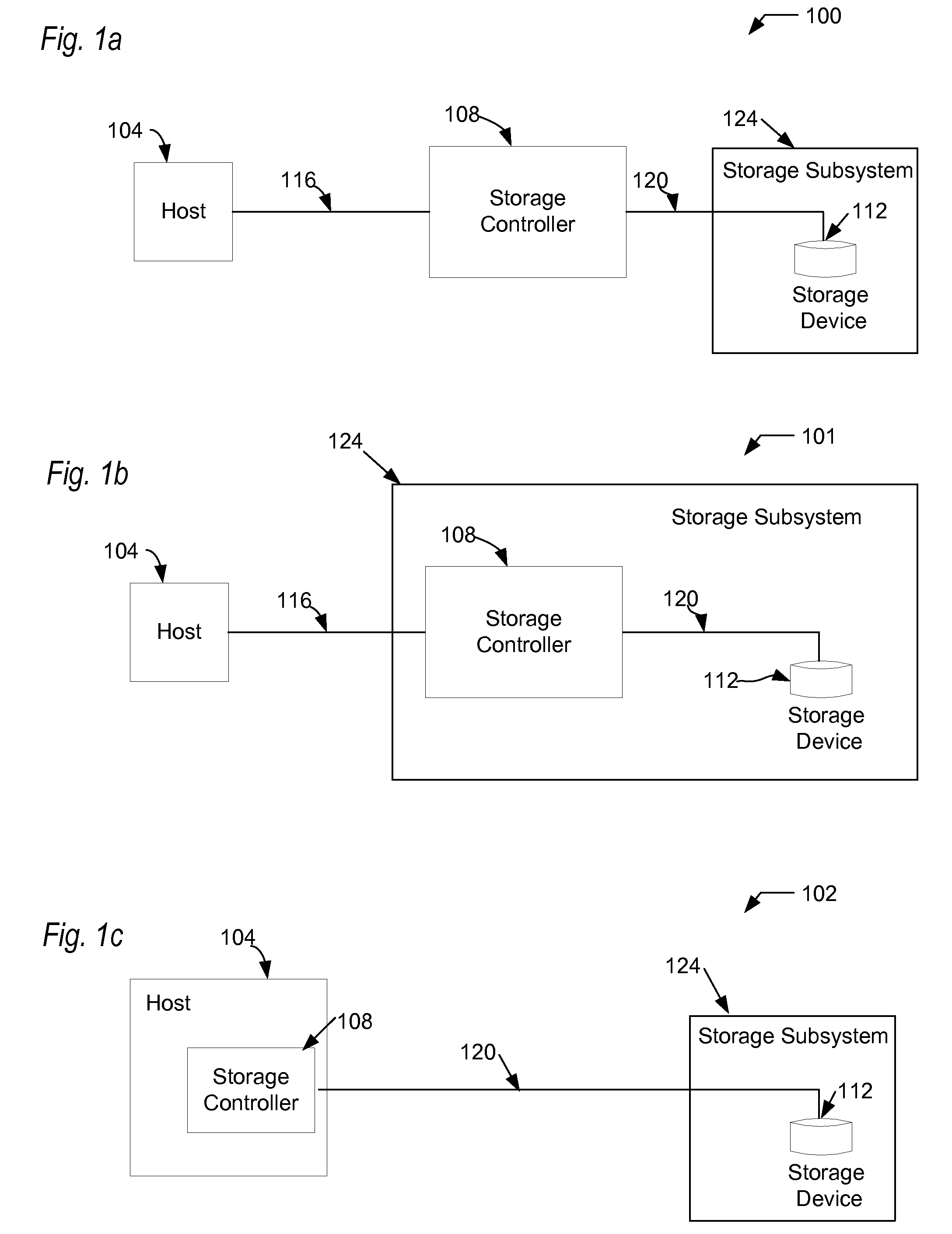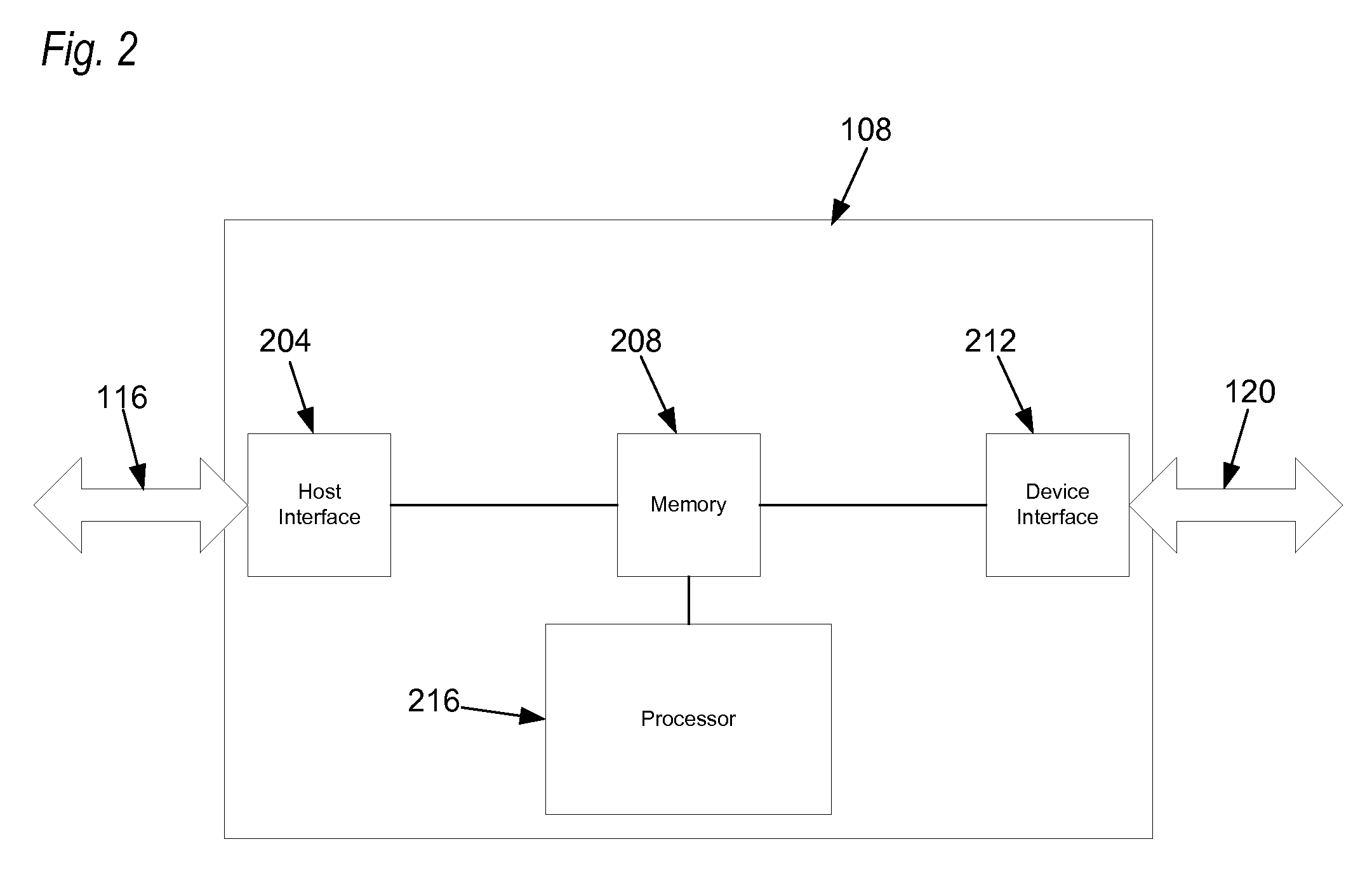Dynamic input/output optimization within a storage controller
a storage controller and optimization technology, applied in the field of dynamic input/output optimization within the storage controller, can solve the problems of corresponding higher latencies, random accesses are handled relatively inefficiently, and associated latencies, and achieve the effect of processing efficiently
- Summary
- Abstract
- Description
- Claims
- Application Information
AI Technical Summary
Benefits of technology
Problems solved by technology
Method used
Image
Examples
Embodiment Construction
[0028]Storage controllers store data on storage devices in a fashion that is optimized for rapid reading and writing by the storage controller. Each data I / O operation to storage devices is composed of a variable number of data blocks, where data block size is usually fixed at 512 bytes. However, it is possible that block size could be different than 512 bytes; 4 K bytes, for example. Storage controllers organize the storage devices into contiguous equal-sized regions across all storage devices that make up a logical volume. These equal-sized regions are called Stripes, and are usually 64 Kbytes. However, a Stripe could be as small as 16 Kbytes or as large as 128 Kbytes or 256 Kbytes. The portion of a Stripe on a single storage device is called a Chunk.
[0029]Chunks are computed within the storage controller by utilizing information within SCSI CDBs (Command Descriptor Blocks). Specifically, the LUN identifies the individual disk drive (Host bus adapters and non-RAID applications) or...
PUM
 Login to View More
Login to View More Abstract
Description
Claims
Application Information
 Login to View More
Login to View More - R&D
- Intellectual Property
- Life Sciences
- Materials
- Tech Scout
- Unparalleled Data Quality
- Higher Quality Content
- 60% Fewer Hallucinations
Browse by: Latest US Patents, China's latest patents, Technical Efficacy Thesaurus, Application Domain, Technology Topic, Popular Technical Reports.
© 2025 PatSnap. All rights reserved.Legal|Privacy policy|Modern Slavery Act Transparency Statement|Sitemap|About US| Contact US: help@patsnap.com



